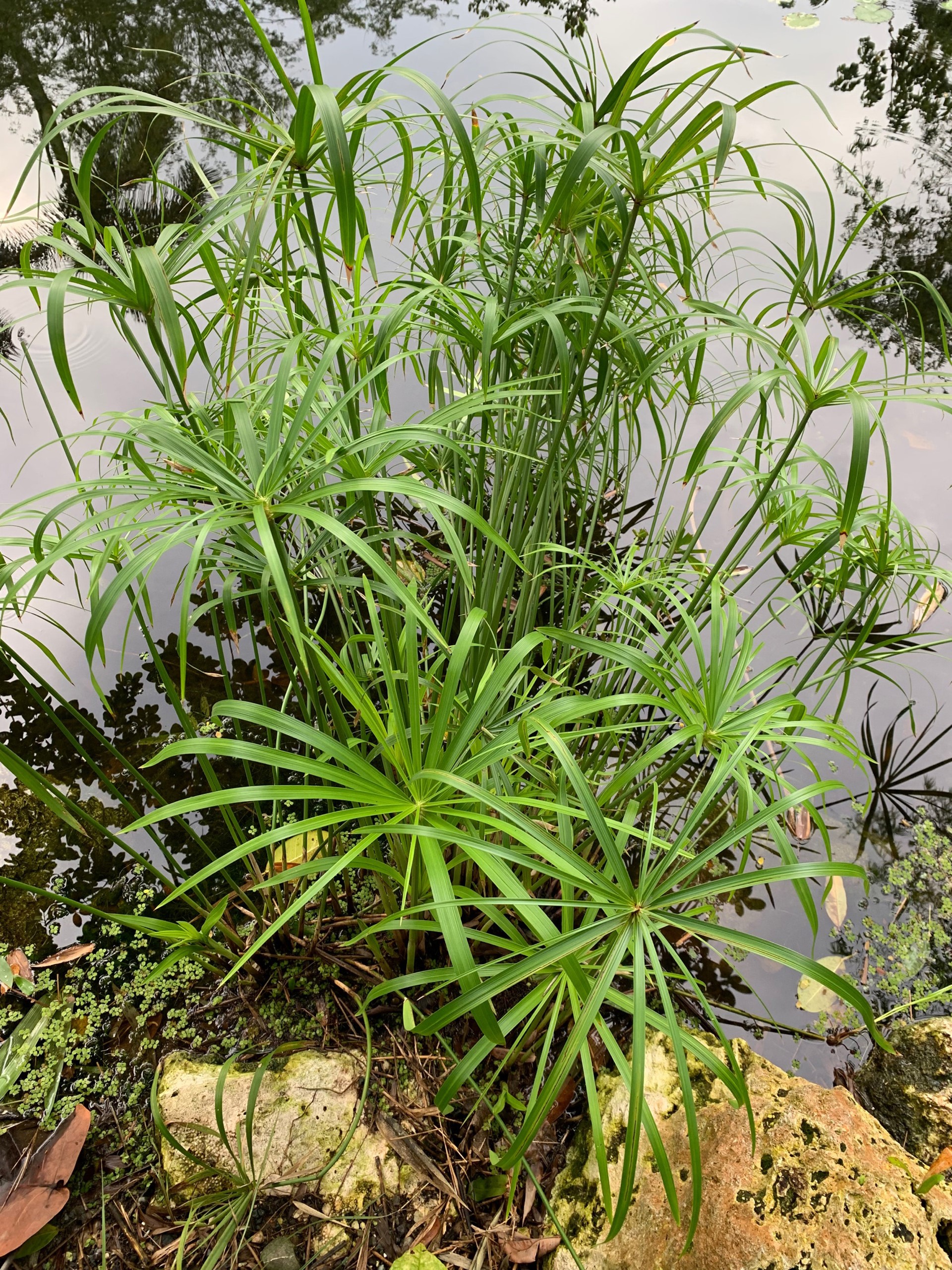

Most of us are looking forward to spending time with our friends and family this holiday season and thinking about what gifts we'll give to the special people in our lives. For those looking to give something more personal, like a homemade gift or card, why not carve out a little time and try your hand at making a card from the paper reed plant, or Cyperus papyrus.
Papyrus was first used by ancient Egyptians, and many important historical documents were written on it. Some of the documents discovered over time describe great historical events such as the building of the Great Pyramid of Giza and the eruption of Mount Vesuvius. Aside from being utilised for writing, papyrus was also used for paintings and making mats and baskets.
An architecturally pleasing plant, papyrus is a clump-forming perennial commonly displayed as an aquatic. Native to Africa, it prefers full sun to part shade and if not sitting directly in water, it likes boggy, wet soil. The flowers, which are fairly insignificant, appear in the summer months and are brownish green. Aside from cutting it back every now and again, papyrus is incredibly easy to care for and has very few pest and disease problems.

Papyrus paper is quite simple to construct and comes from the reed of the plant, which is also known as the stem. The outer layer of the stem is peeled off, and the inside, which is called the pith, is cut into thin long strips. The strips are then soaked in water and placed next to each other, preferably even overlapping slightly, then a second layer is placed on top of the first layer at a right angle. The papyrus will need to dry, so it is best to place it in a covering, the same way you would press fresh flowers.
Once you have finished the first steps, you’ll need a heavy object to rub over the paper, which causes the pith strips to mesh, then press and dry
Paper reed is common in the Caribbean, though papyrus paper was not, due to its susceptibility to break down in humid conditions. It was, however, ideal for the dry climate of ancient Egypt.
If you do feel crafty and festive enough to give it a try, make sure to store it in a nice dry area which will extend its lifetime.
This article originally appeared in the December 2021 print edition of Camana Bay Times.

About the author
Shannon Schmidt is a horticulture manager at Dart’s Arboretum Services Ltd. Joining Dart in 2012, Shannon previously worked in parks, public gardens and tourism properties, among others. Originally from the Finger Lakes region of New York State, Shannon loves island life, spending time paddleboarding around the canals and mangroves, in the sea, and spending time outdoors with her two energetic Boston Terriers Nollie and Ebbie and her equally energetic partner Chase! Shannon holds a Bachelor of Science in Recreation, Park and Tourism Management from The Pennsylvania State University and a Diploma in Horticulture from the Longwood Gardens Professional School of Horticulture, and loves spending time swinging in a hammock, with her favourite smoothie from Jessie’s Juice Bar and reading material from Next Chapter.